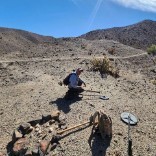Minelab Eureka Gold Or Minelab Xterra 705 - With Notes On Prior Minelab VLF Detectors
-
Similar Content
-
- 4 replies
- 3,096 views
-
- 0 replies
- 1,123 views
-
- 8 replies
- 1,380 views
-
- 28 replies
- 7,688 views
-
- 22 replies
- 5,261 views
-
- 2 replies
- 2,130 views
-
-






Recommended Posts
Create an account or sign in to comment
You need to be a member in order to leave a comment
Create an account
Sign up for a new account in our community. It's easy!
Register a new accountSign in
Already have an account? Sign in here.
Sign In Now